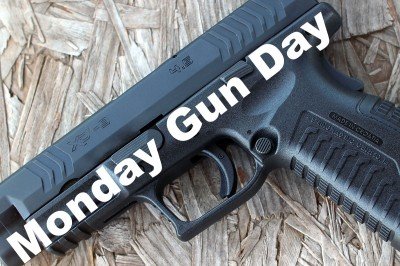Shhh! At the request of Springfield Armory, we’re going to keep quiet for a little while. I picked up a package yesterday from the folks in Geneseo, and in the box were too shiny new pistols. I mean really new, like not even on the shelves yet. And they’ve made some really big changes.
XDm
Show First
First Look: Springfield Armory XD(M) 9mm and 45 Threaded Barrel Models
BY Tom McHale Updated: June 5, 2015Glock 41 vs Springfield XDm 5.25
BY S.H. Blannelberry Updated: January 10, 2015How do these two pistols chambered in .45 ACP stack up against one another? Hickok45 breaks it down for us.
Monday Gun-Day: Springfield Armory XDm 4.5 9mm
BY Dave Higginbotham Updated: August 24, 2014[one_half padding=”0 0 0 0px”] [/one_half] [one_half_last padding=”0 0 0 0px”] [/one_half_last] Springfield Armory is winding down their August Duel promotion, but there are still ways to win. . Contestants can submit entries once an hour, every hour. And even if you don’t win this contest, which most of us won’t, I’d suggest you give [...]
UPDATE! Springfield XD(M) 5.25 9mm, 40S&W, 45ACP Field Test
BY Paul Helinski Updated: November 10, 2011
The last time we saw the new Springfield Armory XD(M) 5.25 I was only able to try the gun for about an hour before having to send it on to the next reviewer. GunsAmerica was the first to have pics and tests of this exciting new competition pistol designed by champion shooter Rob Leatham. At the time it was only available in 9mm as well. Several of the comments that came in asked the question, when are they going to offer it in .40S&W and .45ACP? The answer is “right now.” The guns should be on your dealer shelves, and there is still some time on the 3 magazines promotion from Springfield.
For competition, Springfield Armory has upped the game on the 5.25 with these two new guns. Both calibers give you more flexibility than the 9mm in competition. They give you the ability to make what is called “major power” in USPSA and other competitive shooting rule systems, and you can make doctored loads for what is called the “power floor.” With the .45ACP you can experiment quite a lot, as you’ll see we did some, and the .40S&W just makes the floor for major power factor, and may be your best option if you want to use the gun in competition as well as self defense or duty.
Power factors are all based on published rules for what the individual competition organizations. The speed of the bullets is measured by a chronograph at the competition itself. To calculate the power factor and figure out the power floor you multiply the weight of the bullet, in grains, with the measured speed in feet per second, divided by a thousand. So for a 125 grain 9mm travelling at 1100 feet per second it works out to 135. A 230 grain 45acp at 850 feet per second is 195.
You will notice that the power factor computation is far different than the foot/pounds computation we have covered in a number of other articles. In the latter, velocity is squared before it is multiplied. In power factor it is simply multiplied. So while in foot/pounds calculations velocity is king, in power factor bullet weight has much more impact.
To “make major” in USPSA for the Open division the power factor is 160, and it is 170 for the Standard and Modified divisions. The minimum caliber to “make major” in the Standard division is .40, which gives you two XD(M) 5.25 guns to choose from. Note also that there is an absolute power floor for USPSA and other competitions of 125. So if you are concerned only with competing at the division level without shooting to make major, you can load to the absolute floor for little or no recoil, if you can get the gun to work properly with low powered loads, as I will explain a bit later.


